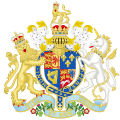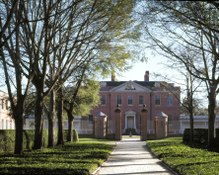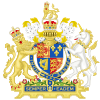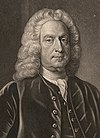| Governor of North Carolina | |
|---|---|
 | |
| Style | His Excellency |
| Residence | Governor's Palace, Newbern |
| Appointer | Monarch of Great Britain |
| Term length | At His Majesty's pleasure |
| Formation | January 24, 1712 |
| First holder | Edward Hyde |
| Final holder | Josiah Martin |
| Abolished | July 4, 1776 |
The governor of North Carolina from 1712 to 1776 was the representative of the British monarch in North Carolina. From 1729 to 1776, he was appointed by the monarch on the advice of the secretary of state for the Southern Department and the Board of Trade. The role of the governor was to act as the de facto head of state, and he was responsible for appointing members of the provincial government after a general election. The governor served as the commander in chief of the provincial militia and had sole responsibility for defence and security. [1] [2] [3] [4] [5]

Besides the governor, other provincial officials included a secretary, attorney general, surveyor general, the receiver general, chief justice, five customs collectors for each of the five ports in North Carolina, and a council. The council advised the governor and also served as the upper house of the legislature. The president of the council occasionally served as acting governor. [1]
List of governors of North Carolina (1712–1776)
| No. | Name (Birth–Death) |
Picture | Took office | Left office | Monarch (Reign) |
|---|---|---|---|---|---|
| 1 |
His Excellency Edward Hyde (1667–1712) |

|
January 24, 1712 | September 8, 1712 |
Anne (1712–1714) |
| — |
His Excellency Thomas Pollock (1654–1722) Council president who served in the absence of governor |

|
September 12, 1712 | May 28, 1714 | |
| 2 |
His Excellency Charles Eden (1673–1722) |

|
May 28, 1714 | March 26, 1722 | |
| — |
His Excellency Thomas Pollock (1654–1722) Council president who served in the absence of governor |

|
March 30, 1722 | August 30, 1722 |
George I (1714–1727) |
| — |
His Excellency William Reed ( c. 1670–1728) Council president who served in the absence of governor |

|
September 7, 1722 | January 15, 1724 | |
| 3 |
His Excellency George Burrington (1682–1759) |

|
January 15, 1724 | July 17, 1725 | |
| 4 |
His Excellency Sir Richard Everard (1683–1733) |

|
July 17, 1725 | February 25, 1731 |
George II (1727–1760) |
| 5 |
His Excellency George Burrington (1682–1759) |

|
February 25, 1731 | April 17, 1734 | |
| — |
His Excellency Nathaniel Rice ( c. 1670–1753) Council president who served in the absence of governor |

|
April 17, 1734 | November 2, 1734 | |
| 6 |
His Excellency Gabriel Johnston (1699–1752) |

|
November 2, 1734 | July 17, 1752 | |
| — |
His Excellency Nathaniel Rice ( c. 1684–1753) Council president who served in the absence of governor |

|
July 17, 1752 | January 28, 1753 | |
| — |
His Excellency Matthew Rowan ( d. 1760) Council president who served in the absence of governor |

|
February 1, 1753 | November 1, 1754 | |
| 7 |
His Excellency Arthur Dobbs (1689–1765) |

|
November 1, 1754 | October 27, 1764 | |
| 8 |
His Excellency William Tryon (1729–1788) |

|
October 27, 1764 | June 30, 1771 |
George III (1760– 1776) |
| — |
His Excellency James Hasell ( d. 1785) Council president who served in the absence of governor |

|
July 1, 1771 | August 12, 1771 | |
| 9 |
His Excellency Josiah Martin (1737–1786) |

|
August 12, 1771 | July 4, 1776 |
References
- ^ a b "Overview of the Colonial Period". NCPEDIA. Retrieved 22 October 2019.
- ^ Lewis, J.D. "House of Burgesses of North Carolina". Carolana.com. Retrieved 23 October 2019.
- ^ Lewis, J.D. "Executive Councils of Royal Governors". Carolana.com. Retrieved 23 October 2019.
- ^ Lewis, J.D. "The Royal Colony Governors". Carolana.com. Retrieved 23 October 2019.
- ^ Robinson, Blackwell P. (1963). The Five Royal Governors of North Carolina 1729-1775.
External links
-
 Media related to
Governors of North-Carolina (1712–1776) at Wikimedia Commons
Media related to
Governors of North-Carolina (1712–1776) at Wikimedia Commons
